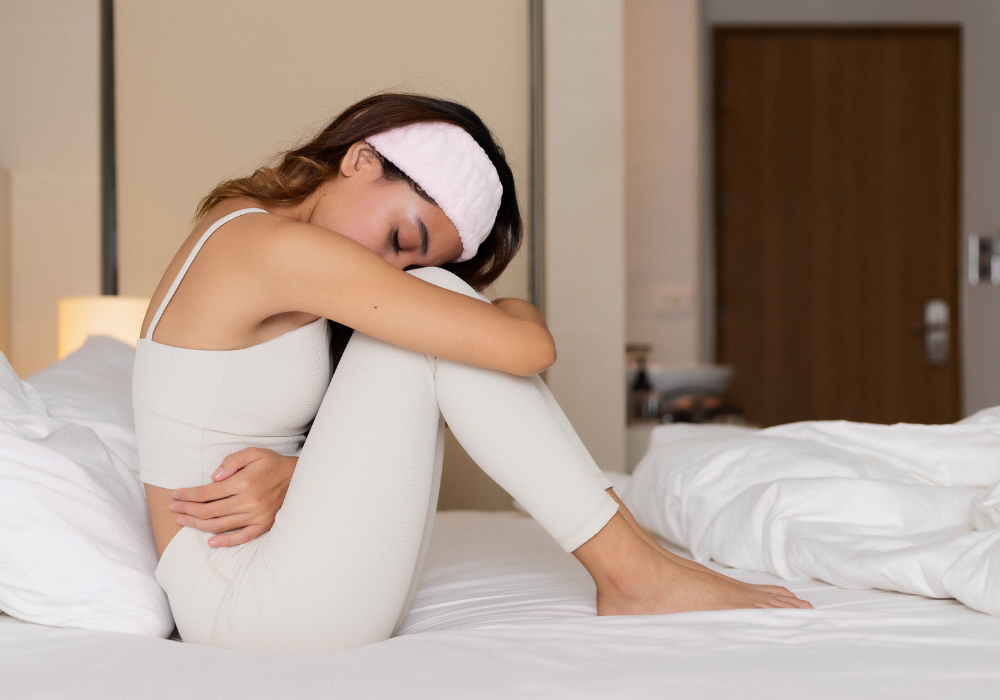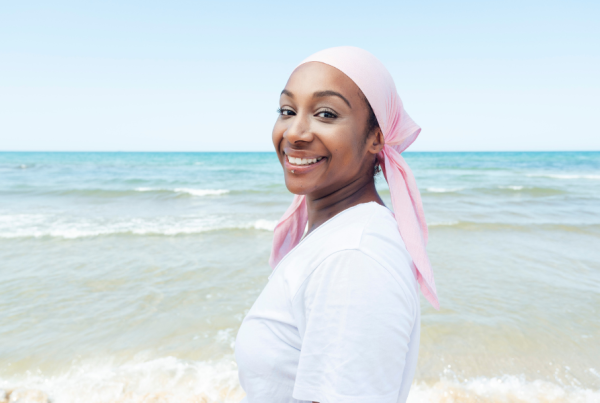Vulvar Pain Disorders
Move Better. Live Fuller. Your Wellness Journey Starts Here.
Schedule a FREE Discovery Call!
What Are Vulvar Pain Disorders?
Vulvar pain disorders are conditions or symptoms that involve pain located around the vulva. The vulva is an umbrella term that refers to all of the external genitalia of someone with a vagina. This includes the opening of the urethra and vagina, labia minor and majora, clitoris, and the mons pubis.
Vulvar pain disorders include a wide variety of conditions, all of which can have different causes. Some conditions include skin conditions, chronic pain, infections, and more. These disorders can have a variety of causes and varying symptoms, all of which cause some form of pain or discomfort—and often make normal activities more difficult.
Vulvar pain disorders can disrupt activities such as using the restroom, engaging in sexual activities, using menstrual products, and even wearing certain clothing.

Some additional symptoms that may or may not occur alongside vulvar pain disorders include itching, burning sensations, discomfort, dryness, redness, swelling, skin texture or color changes, changes in discharge, urinary symptoms, and difficulty sitting for long periods.
Because vulvar conditions are not often discussed or taught, and they can be more difficult for the average person to recognize or understand without the help of a professional. While you should always consult a doctor about your symptoms in order to gain treatment, learning about some of the different conditions may help you categorize your symptoms better.
Let’s take a look at some specific vulvar pain disorders and how their symptoms may differ:
Chronic Pain Conditions
Vulvodynia: Characterized by chronic vulvar pain without an identifiable cause, often accompanied by burning, stinging, or irritation.
Vestibulodynia: Formerly known as vulvar vestibulitis syndrome. As a subtype of vulvodynia, this condition involves pain specifically in the vestibule, which is the area surrounding the entrance to the vagina. The pain is often triggered by touch or pressure, such as during sexual intercourse or tampon insertion.
Cyclic vulvovaginitis: Characterized by recurrent vulvar irritation, itching, and pain that seem to fluctuate with the menstrual cycle.
Vaginal atrophy: Also known as genitourinary syndrome of menopause (GSM). Primarily refers to the thinning, drying, and inflammation of the vaginal walls due to a decrease in estrogen levels, which is most commonly associated with menopause. However, it can also occur during breastfeeding or with the use of some types of birth control.
Clitorodynia: Pain localized to the clitoris, without an identifiable cause.
Vaginismus: Involves the involuntary tightening of muscles in reaction to penetration. This makes it difficult and painful to use menstrual items, or engage in penetration for pleasure.
Vulvar Skin Conditions
Lichen sclerosus: A chronic condition characterized by white, thin, and fragile skin on the vulva. This leads to itching, pain, and sometimes scarring.
Lichen planus: An inflammatory condition that can cause purplish, itchy, flat bumps on the vulva. It may also affect other parts of the body.
Lichen simplex chronicus: A condition that results from chronic itching and scratching, leading to thickened, leathery skin on the vulva. This is usually accompanied by pain and itching.
Dermatologic conditions: Various skin disorders, such as eczema, psoriasis, and scleroderma can affect the vulva and cause itching, pain, and discomfort.
Vulvar Infections
Thrush: A common yeast infection that is often accompanied by itching, burning, stinging, or white discharge. Referred to as recurrent vulvovaginal candidiasis if it happens often within a single year.
Genital warts: An STI that causes growths on the labia or around the opening of the vagina.
Genital herpes: An STI that does not always show symptoms, but when they are present can involve itching, burning, stinging, blisters, and fever.
Cancer-Related Conditions
While vulvar cancer is rare, it still falls under the umbrella of vulvar pain disorders and therefore is important to include here:
Squamous cell carcinoma: The most common type of vulvar cancer. Occurs when normal skin cells change abnormally, causing a rapid growth of the cells. This growth can cause a mass or tumor formation.
Melanoma: This skin tumor forms in the pigment producing cells of the vulva. It grows rapidly and can spread to other areas of the body.
Adenocarcinoma: A type of tumor that forms in from the sweat glands, most often on the sides of the vaginal opening.
What Causes Vulvar Pain Disorders?
Vulvar pain disorders are not totally understood; some conditions even include pain that has no explanation. However, studies suggest that the pain is thought to be caused by many different things, from bodily changes to underlying conditions. Different causes will require different treatments—but regardless, a professional can help you better understand your condition and identify suitable treatments for your symptoms.
Some causes commonly thought to have a correlation with vulvar pain disorders include the following:
- Allergic reactions and irritants: Can include soaps, wipes, detergents, pads or panty liners, deodorants, lubricants, and some fabrics.
- Skin or inflammatory conditions: Such as eczema or psoriasis.
- Hormonal changes: Typically associated with pregnancy, menopause, or birth control.
- Infections: Such as STIs or yeast infections.
- Pelvic floor dysfunction: Pelvic floor dysfunction can be caused by poor blood flow, nerve entrapment, or pain from muscle tension. Frequent bladder leaks can also cause vulvar irritation and itching.
- Genetic factors: Some vulvar skin conditions are thought to be hereditary.
- Psychological factors: Stress or anxiety can lead to unexplained vulvar pain.
- Autoimmune disorders: Some vulvar skin conditions, such as lichen sclerosus, are thought to be caused by autoimmune disorders.
- Neurological conditions
- Trauma or injury
- Age
Physical Therapy for Vulvar Pain Disorders
It is very important to see a professional for your vulvar pain disorder symptoms. Attempting to self-treat may cause worsening of your symptoms, so this is not advised. The vulva is a delicate part of your body, and you will want to pursue accurate treatment and diagnosis from an expert.
Many vulvar pain disorders can be treated or managed with pelvic floor physical therapy. Understanding your pelvic floor and gaining better control and coordination of your pelvic floor muscles can be especially helpful for disorders such as vulvodynia, vaginismus, dyspareunia, and more.
With other vulvar disorders, pain and uncomfortable experiences with vulvar disorders can result in patients unconsciously having a reaction in their pelvic floor muscles. General pain, pain with urination, or pain associated with sexual activity can cause the pelvic muscles to tighten as a response. Patients may find themselves unintentionally associating the sensation of touch around the vulvar area with pain. This can cause difficulties both during and after treatment. Therefore, in addition to the other treatment strategies suggested by your provider, it may be helpful to seek pelvic floor therapy.
A pelvic floor therapist can help you regain or maintain control of your pelvic floor muscles, and allow you a better quality of life, pain-free. They are trained in all aspects of the pelvic floor, and can address many vulva-related issues such as chronic pain, painful sex, urinary issues, scarring, and much more. Some specific treatments your pelvic floor therapist may choose can include:
- Manual therapy
- Electrical muscle stimulation
- Exercise prescription
- Behavioral modifications
- Therapeutic modalities
- Neuromuscular re-education
- Biofeedback
- Therapeutic activity
Vulvar pain disorders are conditions or symptoms that involve pain located around the vulva. The vulva is an umbrella term that refers to all of the external genitalia of someone with a vagina.
This includes the opening of the urethra and vagina, labia minor and majora, clitoris, and the mons pubis.
Vulvar pain disorders include a wide variety of conditions, all of which can have different causes. Some conditions include skin conditions, chronic pain, infections, and more.
Vulvar pain disorders can have a variety of causes and varying symptoms, all of which cause some form of pain or discomfort—and often make normal activities more difficult.
This can include using the restroom, engaging in sexual activities, using menstrual products, and even wearing certain clothing.
Some additional symptoms that may or may not occur alongside vulvar pain disorders include itching, burning sensations, discomfort, dryness, redness, swelling, skin texture or color changes, changes in discharge, urinary symptoms, and difficulty sitting for long periods.
Because vulvar conditions are not often discussed or taught, and they can be more difficult for the average person to recognize or understand without the help of a professional.
While you should always consult a doctor about your symptoms in order to gain treatment, learning about some of the different conditions may help you categorize your symptoms better.
Let’s take a look at some specific vulvar pain disorders and how their symptoms may differ:
Chronic Pain Conditions
Vulvodynia
Characterized by chronic vulvar pain without an identifiable cause, often accompanied by burning, stinging, or irritation.
Vestibulodynia
Formerly known as vulvar vestibulitis syndrome. As a subtype of vulvodynia, this condition involves pain specifically in the vestibule, which is the area surrounding the entrance to the vagina. The pain is often triggered by touch or pressure, such as during sexual intercourse or tampon insertion.
Cyclic vulvovaginitis
Characterized by recurrent vulvar irritation, itching, and pain that seem to fluctuate with the menstrual cycle.
Vaginal atrophy
Also known as genitourinary syndrome of menopause (GSM). Primarily refers to the thinning, drying, and inflammation of the vaginal walls due to a decrease in estrogen levels, which is most commonly associated with menopause. However, it can also occur during breastfeeding or with the use of some types of birth control.
Clitorodynia
Pain localized to the clitoris, without an identifiable cause.
Vaginismus
Involves the involuntary tightening of muscles in reaction to penetration. This makes it difficult and painful to use menstrual items, or engage in penetration for pleasure.
Vulvar Skin Conditions
Lichen sclerosus
A chronic condition characterized by white, thin, and fragile skin on the vulva. This leads to itching, pain, and sometimes scarring.
Lichen planus
An inflammatory condition that can cause purplish, itchy, flat bumps on the vulva. It may also affect other parts of the body.
Lichen simplex chronicus
A condition that results from chronic itching and scratching, leading to thickened, leathery skin on the vulva. This is usually accompanied by pain and itching.
Dermatologic conditions
Various skin disorders, such as eczema, psoriasis, and scleroderma can affect the vulva and cause itching, pain, and discomfort.
Vulvar Infections
Thrush
A common yeast infection that is often accompanied by itching, burning, stinging, or white discharge. Referred to as recurrent vulvovaginal candidiasis if it happens often within a single year.
Genital warts
An STI that causes growths on the labia or around the opening of the vagina.
Genital herpes
An STI that does not always show symptoms, but when they are present can involve itching, burning, stinging, blisters, and fever.
Cancer-Related Conditions
While vulvar cancer is rare, it still falls under the umbrella of vulvar pain disorders and therefore is important to include here:
Squamous cell carcinoma
The most common type of vulvar cancer. Occurs when normal skin cells change abnormally, causing a rapid growth of the cells. This growth can cause a mass or tumor formation.
Melanoma
This skin tumor forms in the pigment producing cells of the vulva. It grows rapidly and can spread to other areas of the body.
Adenocarcinoma
A type of tumor that forms in from the sweat glands, most often on the sides of the vaginal opening.
Vulvar pain disorders are not totally understood; some conditions even include pain that has no explanation. However, studies suggest that the pain is thought to be caused by many different things, from bodily changes to underlying conditions.
Different causes will require different treatments—but regardless, a professional can help you better understand your condition and identify suitable treatments for your symptoms.
Some causes commonly thought to have a correlation with vulvar pain disorders include the following:
- Allergic reactions and irritants: Can include soaps, wipes, detergents, pads or panty liners, deodorants, lubricants, and some fabrics.
- Skin or inflammatory conditions: Such as eczema or psoriasis.
- Hormonal changes: Typically associated with pregnancy, menopause, or birth control.
- Infections: Such as STIs or yeast infections.
- Pelvic floor dysfunction: Pelvic floor dysfunction can be caused by poor blood flow, nerve entrapment, or pain from muscle tension. Frequent bladder leaks can also cause vulvar irritation and itching.
- Genetic factors: Some vulvar skin conditions are thought to be hereditary.
- Psychological factors: Stress or anxiety can lead to unexplained vulvar pain.
- Autoimmune disorders: Some vulvar skin conditions, such as lichen sclerosus, are thought to be caused by autoimmune disorders.
- Neurological conditions
- Trauma or injury
- Age
It is very important to see a professional for your vulvar pain disorder symptoms.
Attempting to self-treat may cause worsening of your symptoms, so this is not advised. The vulva is a delicate part of your body, and you will want to pursue accurate treatment and diagnosis from an expert.
Many vulvar pain disorders can be treated or managed with pelvic floor physical therapy.
Understanding your pelvic floor and gaining better control and coordination of your pelvic floor muscles can be especially helpful for disorders such as vulvodynia, vaginismus, dyspareunia, and more.
With other vulvar disorders, pain and uncomfortable experiences with vulvar disorders can result in patients unconsciously having a reaction in their pelvic floor muscles.
General pain, pain with urination, or pain associated with sexual activity can cause the pelvic muscles to tighten as a response.
Patients may find themselves unintentionally associating the sensation of touch around the vulvar area with pain.
This can cause difficulties both during and after treatment. Therefore, in addition to the other treatment strategies suggested by your provider, it may be helpful to seek pelvic floor therapy.
A pelvic floor therapist can help you regain or maintain control of your pelvic floor muscles, and allow you a better quality of life, pain-free.
They are trained in all aspects of the pelvic floor, and can address many vulva-related issues such as chronic pain, painful sex, urinary issues, scarring, and much more.
Some specific treatments your pelvic floor therapist may choose can include:
- Manual therapy
- Electrical muscle stimulation
- Exercise prescription
- Behavioral modifications
- Therapeutic modalities
- Neuromuscular re-education
- Biofeedback
- Therapeutic activity
You can learn more about these treatments on our Treatments Page.





